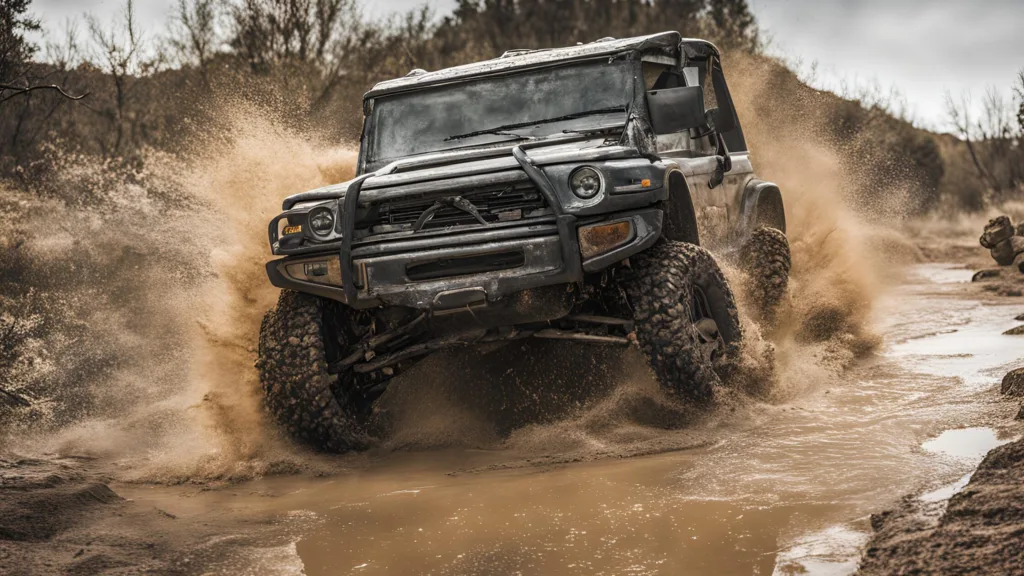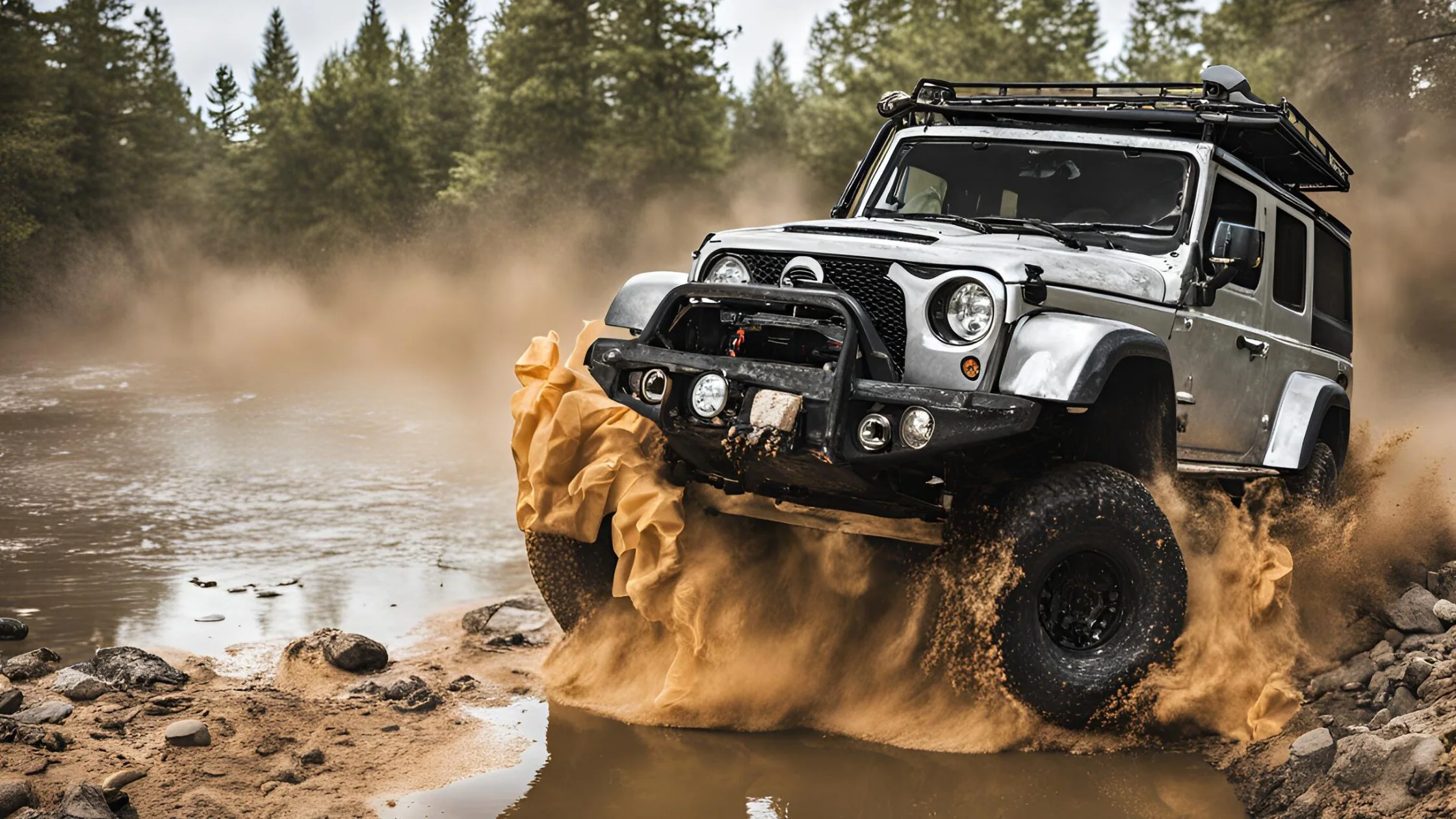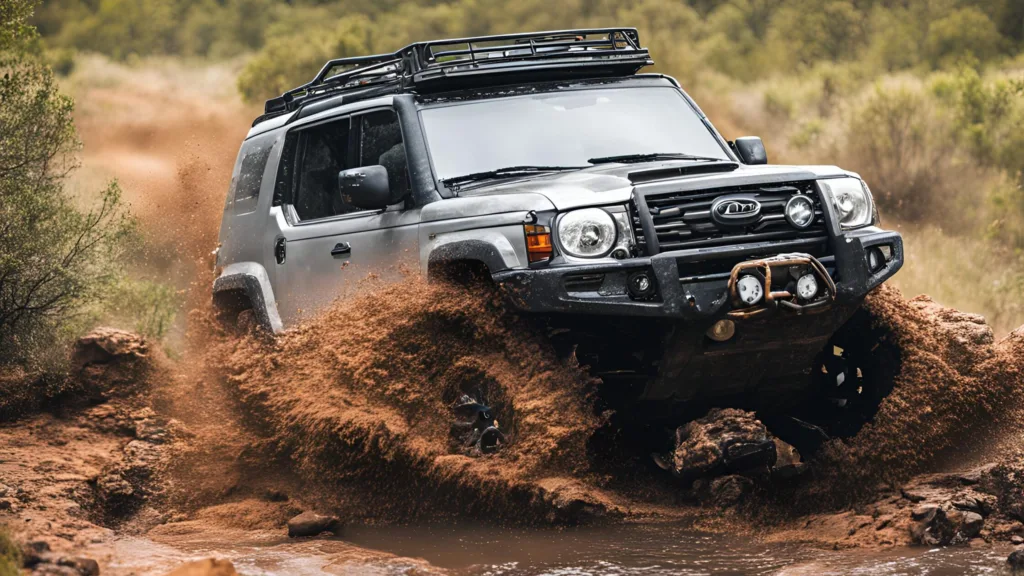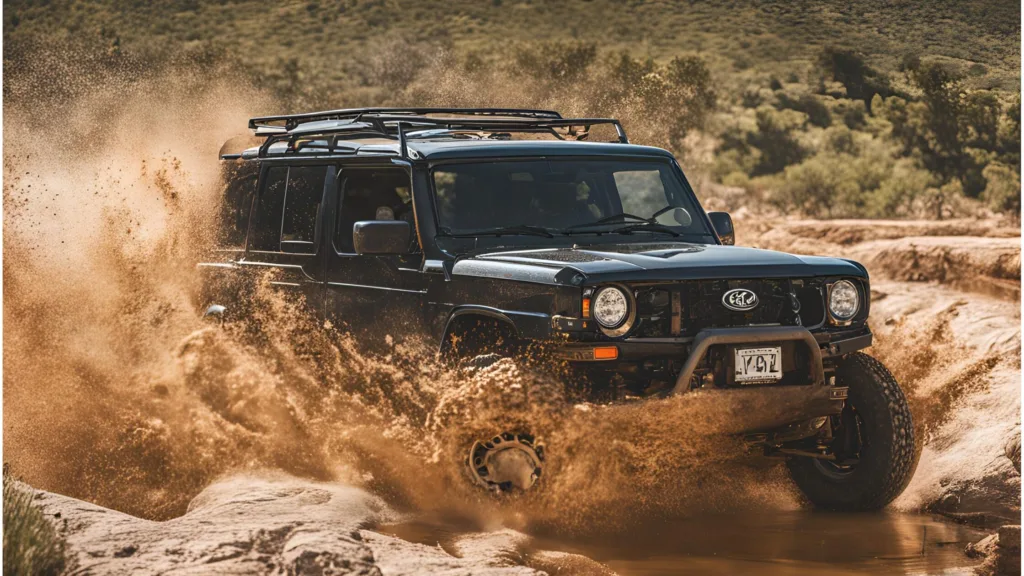Waterproofing for Off-Roading is essential for protecting off-road vehicles from water damage. Proper sealing prevents rust and electrical issues under wet conditions.
Embarking on off-road adventures exposes vehicles to challenging environments where water is a constant threat. From crossing rivers to facing sudden downpours, the off-road experience can quickly turn into a costly affair without the right waterproofing measures. Ensuring your vehicle is prepared for these conditions involves more than just a robust exterior; it requires careful attention to detail in sealing potential entry points for water.
This process enhances the durability of your vehicle and safeguards its critical components, allowing you to tackle any terrain with confidence. Emphasizing the importance of waterproofing will not only extend the life of your off-road companion but also ensure safety and reliability in the most unpredictable situations.
The Basics Of Waterproofing For Off-roading
Welcome to the adventurous realm of off-roading, where mud, rivers, and rain are all part of the thrill. But before diving into unpredictable terrain, understanding the basics of waterproofing is crucial. It keeps vehicles safe and resilient against the elements. This essential guide will navigate through the tricks and tips of keeping your ride dry and dive-ready.
What Makes An Off-road Vehicle Waterproof?
A truly waterproof off-road vehicle is more than just a machine that can tread on water. It’s a well-prepared ally, equipped with specialized features and modifications. Sealants, waterproof covers, and marine-grade components form an impervious shield. This shield protects the engine, electrical systems, and interior from water damage. Mastery in waterproofing is what separates the seasoned off-roaders from the novices.
- Sealed Electrical Connections: Safe from short circuits and corrosion.
- Snorkels: Allow engines to breathe, even when deep in water.
- Differential Breathers: Protect gears by preventing water ingress.
Critical Components To Protect
When gearing up for a wet and wild adventure, protect certain components to ensure a smooth journey. Key parts like the engine, electricals, and interior demand extra care. Let’s break down the elements that call for a waterproof fortress.
| Component | Protection Method |
|---|---|
| Engine | Waterproof seals, snorkel installation |
| Electrical System | Dielectric grease, sealed connectors, relays |
| Interior Cabin | Water-resistant coatings, raised flooring |
Remember, water damage not only hinders performance but can also lead to costly repairs. Each component is vital for a successful off-roading escapade. Guard them like a treasure to ensure endless adventures without the worry of getting stranded in the great outdoors.
Choosing The Right Materials For Waterproofing
Your off-roading adventures depend on keeping your gear dry. Waterproofing is a must. But what materials work best? Let’s dive into the specifics to keep you on the move and moisture-free.
Comparing Synthetic And Natural Materials
Different materials offer various levels of protection. Synthetics like nylon and polyester are popular. Natural options include wool and cotton. Both have pros and cons.
- Synthetics
- Resist water well
- Quick to dry
- Durable against wear
- Naturals
- Comfortable against skin
- Breathable
- May require extra treatment
Coatings And Sealants Essentials
To enhance material performance, coatings and sealants are key. These products create a barrier against water. Your choice can mean the difference between a damp or a dry trip.
| Type | Use Case | Benefits |
|---|---|---|
| Water Repellent Coatings | For light moisture and quick trips |
|
| Waterproof Sealants | For heavy rain and harsh conditions |
|
Remember to check compatibility with your materials. Apply as instructed for best results. Proper application ensures a dry and fun off-roading experience.
Diy Waterproofing Techniques
Heading for an off-road adventure? Protect your ride with DIY waterproofing. Water can damage your vehicle’s vital parts. But fear not! You can safeguard your off-roading beast yourself. Let’s dive into easy, effective techniques to keep you moving through mud and streams.
Sealing Electrical Connections
Water and electricity are a risky mix. Sealing electrical connections is crucial. Follow these steps:
- Turn off your vehicle and let it cool down.
- Clean all connection points with a dry cloth.
- Apply dielectric grease to prevent corrosion and water intrusion.
- Cover connections with high-quality electrical tape.
- For extra safety, use heat shrink tubing.
Creating A Snorkel For Engine Breathing
Engines love air, not water. A snorkel helps your engine breathe on wet trails. Here’s a simple guide:
- Gather PVC pipes or purchase a snorkel kit that fits your vehicle.
- Measure and cut the pipes to size, considering the air intake location.
- Secure the pipes with brackets and waterproof sealant.
- Test the setup for air leaks by revving the engine.
With these methods, you’re ready to conquer any water obstacle. Enjoy a stress-free ride, knowing your off-road champion can handle the splash!

Professional Solutions For Enhanced Durability
Professional Solutions for Enhanced Durability are essential when embarking on off-roading adventures. Proper waterproofing tactics ensure a vehicle’s longevity, even in the harshest environments. Let’s explore how advanced underbody protection and professional installation can make a significant difference.
Underbody Protection
The underbelly of an off-road vehicle is most vulnerable. It faces mud, rocks, and water. Professional-grade underbody protection shields vital components from damage. Made from high-tech materials, these guards can withstand severe impact and constant exposure to moisture.
- Skid plates: Defend engine and transmission
- Rock sliders: Protect vehicle sides and undercarriage
- Differential guards: Safeguard axle housing components
Advantages Of Professional Installation
Expert installation of waterproofing components can make all the difference. Professional installers ensure your vehicle’s waterproofing is thorough and reliable. Saving future costs, enhancing safety, and maintaining resale value are few perks of professional service.
| Benefit | Impact |
|---|---|
| Expert Knowledge | Installation done right the first time |
| Quality Materials | Long-lasting protection against elements |
| Warranty Options | Peace of mind with coverage |
Maintenance And Care For Waterproofed Vehicles
Maintaining a waterproofed vehicle is key for off-roaders. It ensures your vehicle stays protected. Proper care prolongs the effectiveness of waterproofing. Stay on top of vehicle maintenance with routine checks and cleaning.
Regular Check-ups And Inspections
Off-roading is tough on vehicles. Regular inspections keep them safe. Check for signs of wear or damage.
- Examine seals and coatings.
- Look for rust or corrosion.
- Assess gaskets around windows and doors.
- Test electrical components for moisture issues.
Regular care keeps waterproofing effective. Make it part of your vehicle routine.
Post-trip Cleaning And Waterproofing Refresh
After off-roading, thorough cleaning is essential. It removes dirt and grime. It prevents damage.
- Rinse off mud and debris.
- Clean undercarriage and wheel wells.
- Dry the vehicle completely.
- Apply a waterproofing refresh product.
These steps keep the vehicle in top condition. They extend the life of waterproofing treatments.

Challenges And Limitations Of Waterproofing
When off-roading enthusiasts armor their rides against water, they often hit a wall. True waterproofing, especially for vehicles that love to play in the mud, presents unique challenges. While modern technology has made it possible to shield electronics and components from moisture, complete invincibility to water is yet a dream. Knowing the constraints and preparing for uninvited water intrusion are key to keeping the adventure alive.
Understanding The Limits Of Waterproofing
Waterproofing a vehicle for off-roading adventures is not failproof. Various parts of a car have different tolerance levels. Seals can wear out, and deep water can apply pressure where it’s not welcome. Here’s a glance at the typical limits:
- Seals are not eternal: They degrade over time, compromising protection.
- Depth matters: Check maximum submersion depth for components.
- Pressure testing: Components can endure only so much force.
- Chemical effects: Some substances can weaken waterproof barriers.
- Heat cycles: Temperature changes might cause materials to expand and contract.
Dealing With Unexpected Water Damage
Foresight saves the day when it comes to water damage. Regularly check and maintain waterproofing measures. Know the signs that water has sneaked into where it shouldn’t:
| Symptom | Potential Cause | Action |
|---|---|---|
| Fogging | Moisture in lights or windows | Check seals & vent tubes |
| Corrosion | Water in electrical connectors | Clean & apply dielectric grease |
| Malfunction | Water damage to components | Inspect & replace if necessary |
Act swiftly once water damage is detected. Let area dry, clean off mud and debris, and use a circuit test for electrical issues. Replace fluids if contamination occurs.
Remember, preparation is the shield, and knowledge is the sword. Equip both to conquer the watery paths ahead!

Frequently Asked Questions For Waterproofing For Off-roading
What Is Off-roading Waterproofing?
Off-roading waterproofing involves applying protective coatings and seals to vehicles. This prevents water damage during off-road adventures.
How To Waterproof Your Vehicle For Off-road?
To waterproof your vehicle, seal all electrical components, lubricate moving parts, and apply a water-repellent treatment to the body.
Benefits Of Waterproofing Off-road Vehicles?
Waterproofing extends vehicle life, protects electronics, improves reliability, and enhances off-roading safety in wet conditions.
Best Materials For Waterproofing Off-road Vehicles?
Use silicone sealants for joints, corrosion-resistant sprays for the underbody, and waterproof covers for interiors.
Conclusion
Embarking on an off-road adventure demands readiness for any challenge. That includes securing your vehicle against water damage. By understanding the right waterproofing techniques and materials, you can confidently tackle treacherous trails. Remember, preserving your ride ensures countless adrenaline-fueled journeys ahead.
Stay dry, and conquer the unbeaten path!


